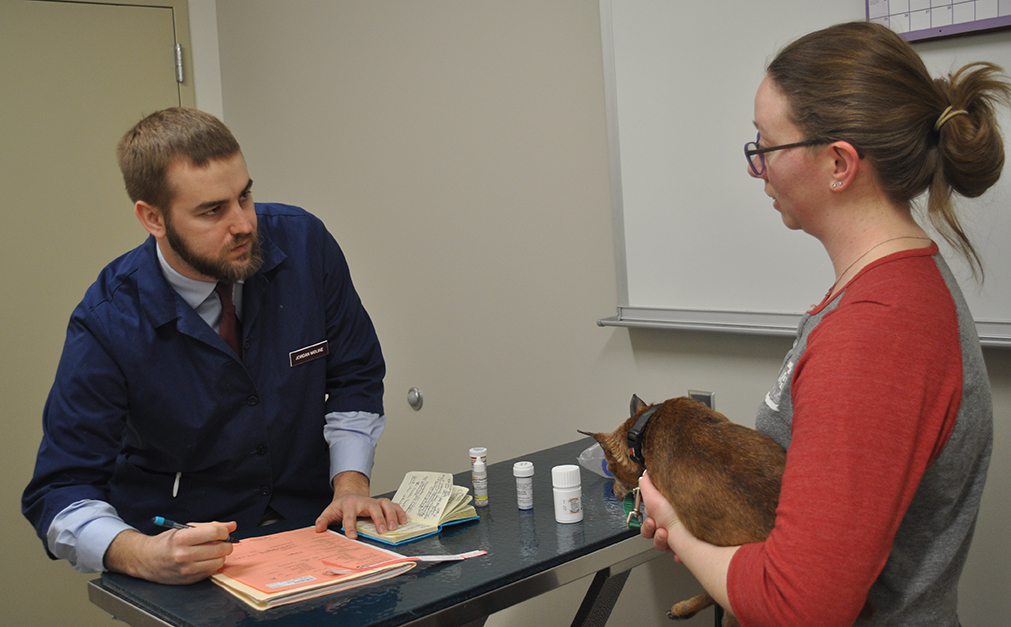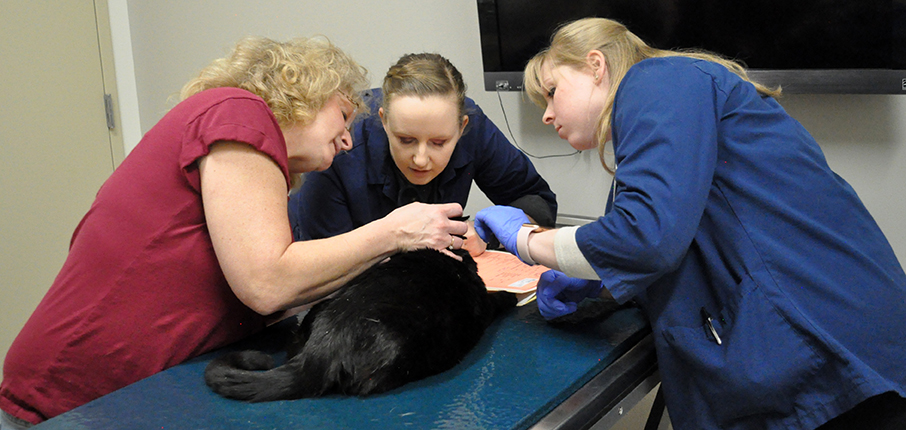
Veterinarians are trained to work with animals. But just as important as the health of the animal is how the veterinarian communicates with clients.
That’s no different in ophthalmology and something that has been drilled into the five fourth-year students participating over the next two weeks in this specialty rotation.
But how the veterinarian communicates with a client depends what type of appointment the patient is being seen for.
Take emergencies for instance. Brad Christensen, one of the fourth-year students in the ophthalmology rotation, experienced that first hand this week when he was called in early Tuesday morning for a pair of emergency procedures.
“When I got here Dr. (Rita) Wehrman (ophthalmology resident) was explaining to the owners what they should expect,” Christensen said. “Many times, in an emergency situation, the owners are distraught so it’s important to let them know they aren’t to blame. Instead we tend to focus on what we can do for the patient.”
Christensen says each owner is different and needs to be communicated as such. Owners bringing their small animal in for a re-check are typically very in-touch with what treatment their pets are getting.
“Clients bringing their pets back in know the drill,” said Jordan Moline, another of the ophthalmology students.
That’s isn’t necessarily the case when this is a patient’s first visit.
“Emergencies are different,” Christensen said. “These animals are part of their family and you can hear the concern in the owners’ voices.
“We just let them know we will care for their pet immediately and answer any questions later as to exactly what treatment we are recommending.”
Monday: On Call

